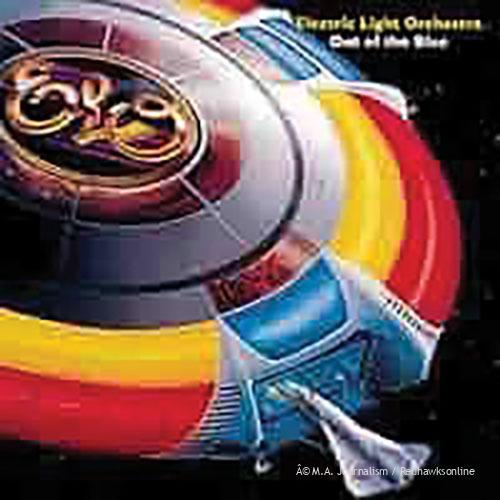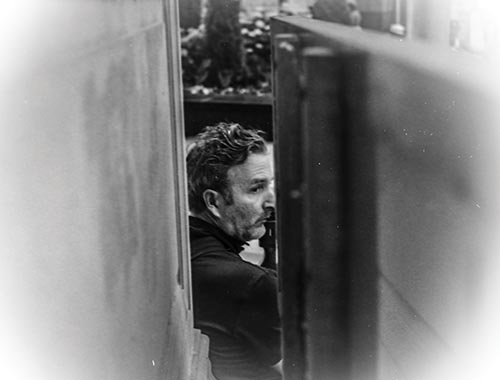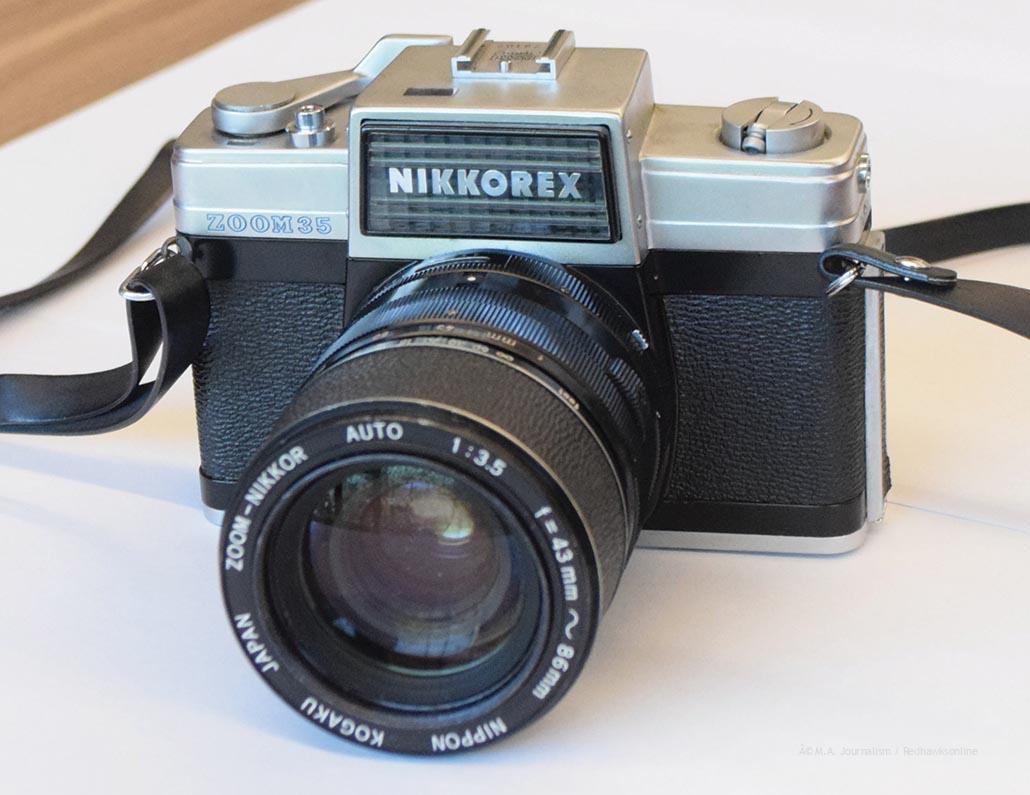Vintage analog tech becomes popular with digital-era youth
As the needle gently dropped onto the intricately etched surface, her bedroom flooded with waves of sound, transforming the mundane moment into one filled with joy and imagination. The crackling silence between songs reminded her of a simpler time, one not dominated by today’s technology.
“I love my record player,” said Langston Stingley, a senior at Minnehaha Academy. “It’s my favorite part of my room.”
Within the digital age often defined by touchscreens and screen time, analog technologies like vinyl are enjoying a resurgence in popularity. When someone reaches into their pocket for what once was simply a telephone and turns on their smartphone, a myriad of applications appear. Two small icons – the camera and music apps – allow users to capture countless photos and videos and open a space where one can listen to millions of songs. So if modern technology grants people the access to endless shooting and streaming possibilities, why are people beginning to revert back to analog technologies?
Musical Media

For Stingley, vinyls let her share the music she loves with the people she loves. Her favorite album to listen to is “Mm…Food” by MF DOOM.
“My turntable provides a sound quality I don’t find when listening to music through my headphones,” said Stingley. “When I put a record on, the people around me can share the experience of the song too.”
The sound between physical media and streaming differs, but what about the difference between CDs and vinyl?
According to BBC Earth Science, “a CD (compact disc) and a vinyl record pulled from the same master tape are, at least at the beginning, mathematically identical.”
Though CDs and vinyl records have the technically the same mathematical sound makeup, they sound different to the ear. A vinyl record requires a physical needle to drag across an etched surface whereas a CD employs a laser to read digital data in binary code on its surface.
Compact Discs (CDs)
The physical process of the analog vinyl record creates a warmer sound for many listeners, as described by Gustave Thill, custom audio system installer of Musical Design, audiophile, and avid vinyl and CD listener.
“A CD generally, is technically superior,” said Thill. “A LP (long play, term synonymous with vinyl record) has more warmth, meaning there is a bit of a bump in the lower-mid range.”
The mid range is the home for the vocals in a song. Although the bump signifies a deviation from the technical recording of a CD, it does not create a negative impact for an LP.
“There’s a big difference between accurate and pleasing,” said Thill. “LPs tend to sound more pleasing because of the lower-mid range bump as well as the attenuation of high frequencies.”
Thill is a lifelong collector of physical format music. His library contains around 1500 LPs and 3000 CDs. As he recalls from his early days of accumulating music to the present day, there has been a significant divergence from the original musical listening experience.
“When an album came out, people raced to record stores to go buy it, bring it home, sit down, and take an hour out of their day or night and do nothing but listen to the music,” said Thill.
Nowadays the average music listener listens when performing a daily routine and can stream music anywhere, at any time of the day.
“There’s nothing wrong with [streaming], but everyone just has the music on,” said Thill. “Music is about the experience, paying attention, sitting, and listening to the artist’s intent: listening to the album from beginning to end.
The intentionality that LPs and CDs require is the allure for Thill. Taking the time to spin and care for a record, and to truly hear what an artist has to say.
“Paying attention– that’s the romantic part, that’s the nostalgic part of all of it. ”
Another essential part of the musical experience is the physical characteristics of albums. From the cover on the sleeves, to the insert and the liner notes, a record’s presentation plays a major role in its musicality.
Of Thill’s 100 most revered albums, The Beatles’ Sgt. Pepper’s Lonely Hearts Club Band, Mile Davis’ Kind of Blue, Pink Floyd’s Animals, and Bob Dylan’s New Morning are some stand out favorites.
Furthermore, first-year Roman Inestroza was initially drawn to the physical media of CDs by his family.
“Growing up my mom had various CDs and I listened to them when I first got into playing guitar,” said Inestroza. “Collecting CDs is something I wanted to do because they will be something I can keep for my future, something I will be able to share with my future family.”
The physical format of CDs (as well as vinyl) allows for the passage of time and creation of modern music to not forget the music of the past.
“I can pop a CD in the player and listen and jam along on my guitar to it,” said Inestroza.
Being able to share music and play along with CDs has allowed Inestroza to make a deeper connection with music classics.
“I find that companies are not releasing or rereleasing many past musical artists, so when I find a CD that was an original release, it is more special.”
Between his appreciation for the music of the past and wanting to bring that music along into his future, Inestroza is a true representation of what the purpose of CDs are today: a physical memory. Inestroza and many music lovers alike cannot pinpoint their favorite artist or album, but there have been some that are particularly influential to him.

“One of my favorite albums is Out of the Blue by Electric light Orchestra,” said Inestroza. “It blends orchestral music with traditional rock and roll which many others and myself think go very well together. It’s an album I can listen to over and over again and listen to all the distinct sounds and all the distinct instruments that the band uses.”
The album’s listening experience sparked Inestroza’s passion for music and established a love for many artists of the same time period including: Tom Petty, Bob Dylan, and The Beatles.
According to Camoin Associates, although modern musical technology like Spotify and Apple Music provide access to millions of songs and albums with a few simple clicks, vinyl records in the US had a 68% increase in total sales volume in 2021 and a 55% increase in total sales revenue in 2020. Sales reached $1 billion for the first time since 1985.
Film photography
Along with physical music formats, there has been a resurgence in physical photography: film. When digital cameras rose in popularity followed by the creation of the smartphone, the market for film photography dropped immensely. Now, it is on the rise.

A photo Ezra Victor took of his father with a Leica film camera during a summer’s day learning street photography.
As reported by Business Research Insights, the film camera market size was US$ 28.6 Billion in 2023 and the market size is predicted to increase to US$ 40 Billion by 2032.
Junior Ezra Victor was swept into the world of film photography by his father, Victor Keller. From an early age, Victor observed his father shooting film photos and messing about with chemicals within their in-home darkroom. His youthful intrigue eventually led to his own partaking in film photography. While Victor and his father were on road trip, they stopped en route in Chicago, Illinois. There, Victor had the opportunity to shoot street photography on film.
“By taking photos of the busy streets of Chicago, I was able to get wonderful outcomes,” said Victor. “I met a few other street photographers and I was able to see their individual experiences and get truly immersed in the world of film.”
Previously, Victor had solely shot digitally. Shooting film has sparked more photographic attention to detail for Victor because everything on a film camera has to be done manually. On a modern digital device like an iphone, someone can take a high quality photo with the push of a button. Whereas even digital cameras can autofocus and establish settings automatically. On a film camera, the photographer must focus the lens, adjust the lighting, and adjust the shutter speed by hand.
The analog form of photography encourages the artistic nature of taking photographs, opening the doors for a newfound aspect of photography for Victor.
“After developing your film, you get to physically touch every photo that you take,” said Victor. “You get to hold all the memories.”
Although the smartphone has created widespread access to advanced technology, allowing anyone to capture photos and videos and listen to a variety of music, physical format media provides irreplaceable experiences. The tactility of being able to hold things that the majority of people only get to see and hear is remarkable.
In a world driven by instant access and intangible memories, the physical media revival stands as a reminder that experiences are meant to be savored, not swiped.

